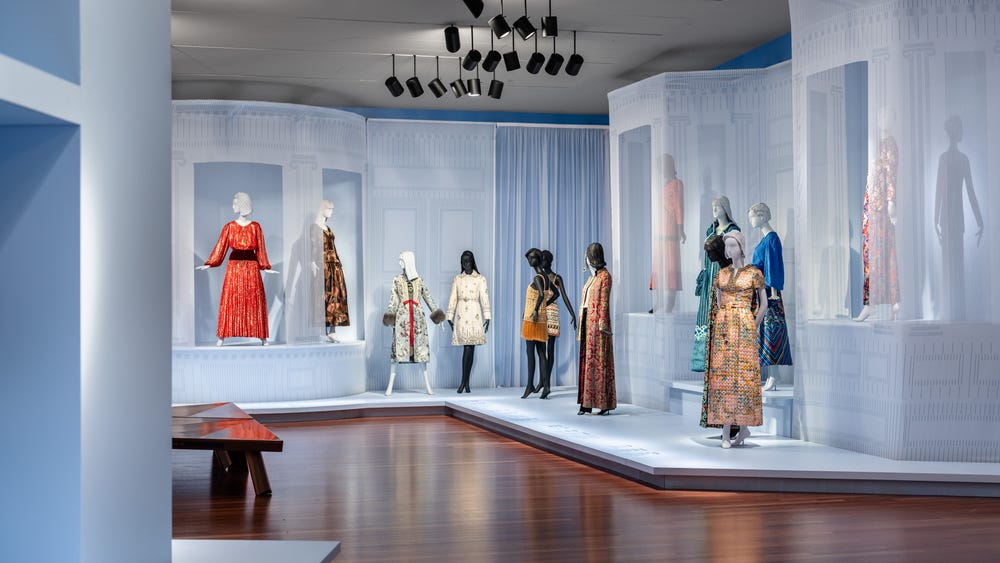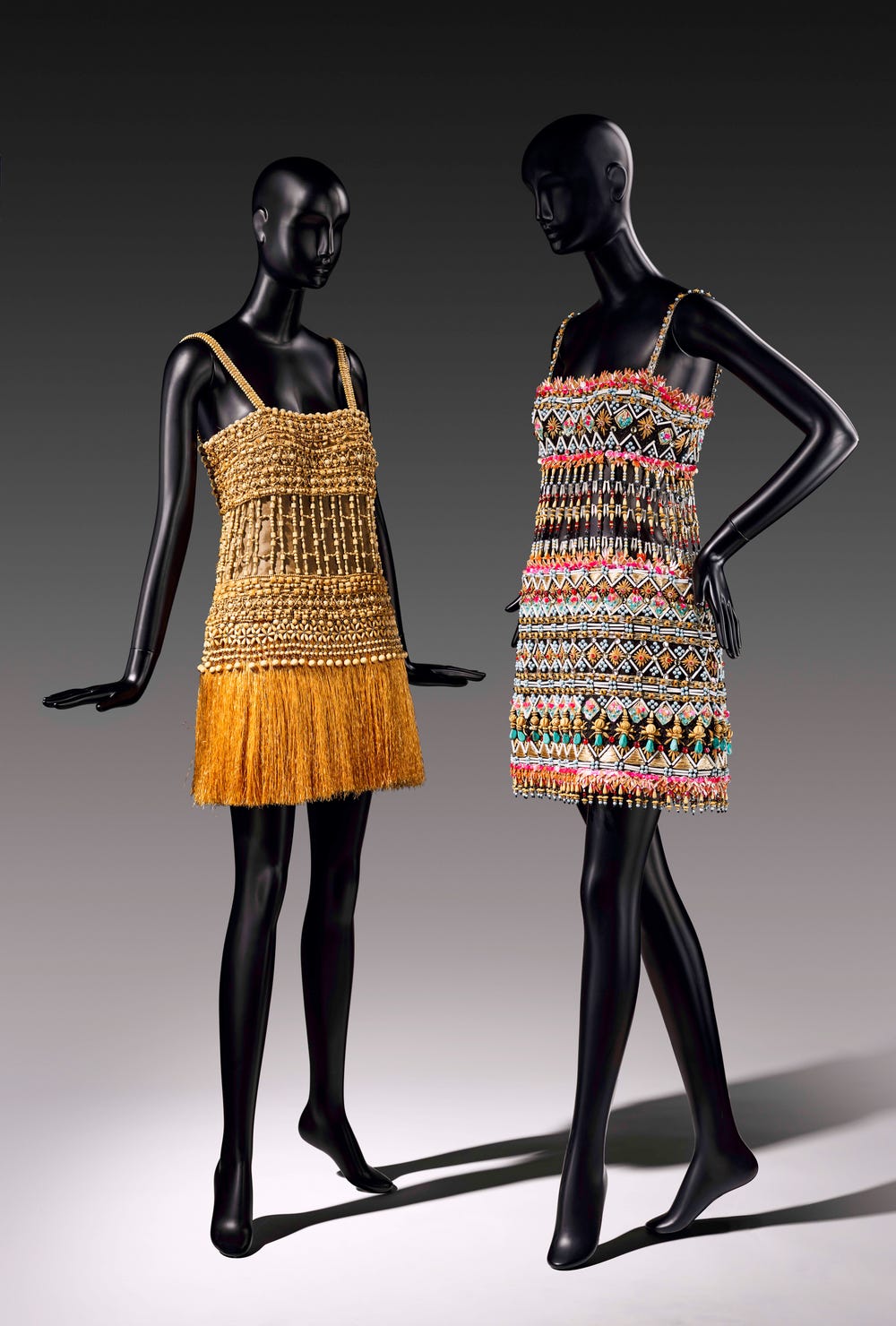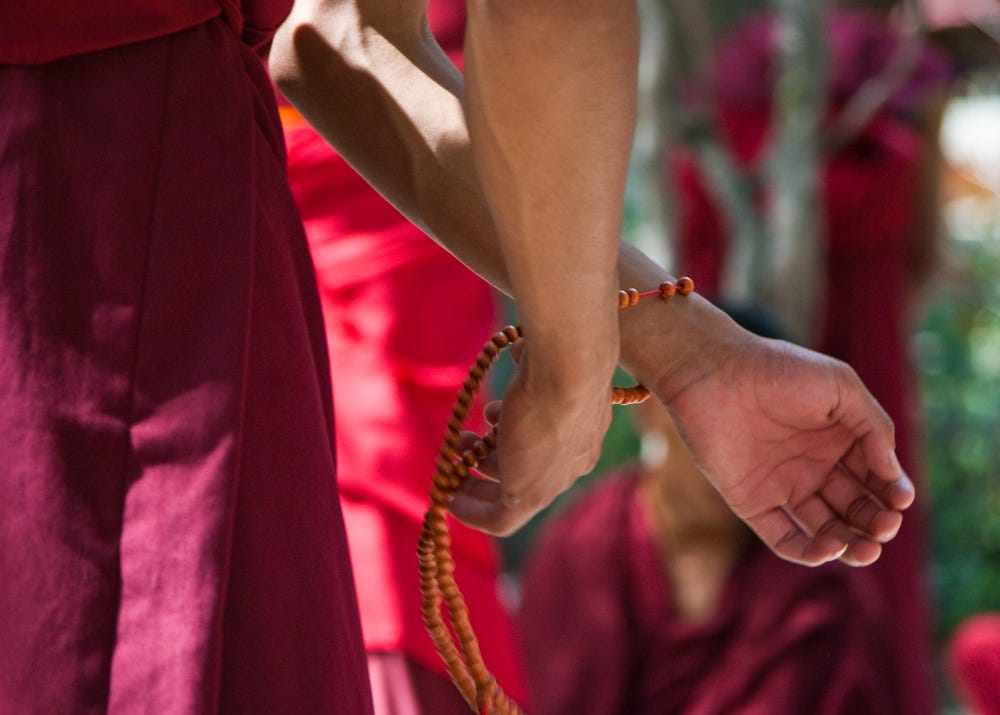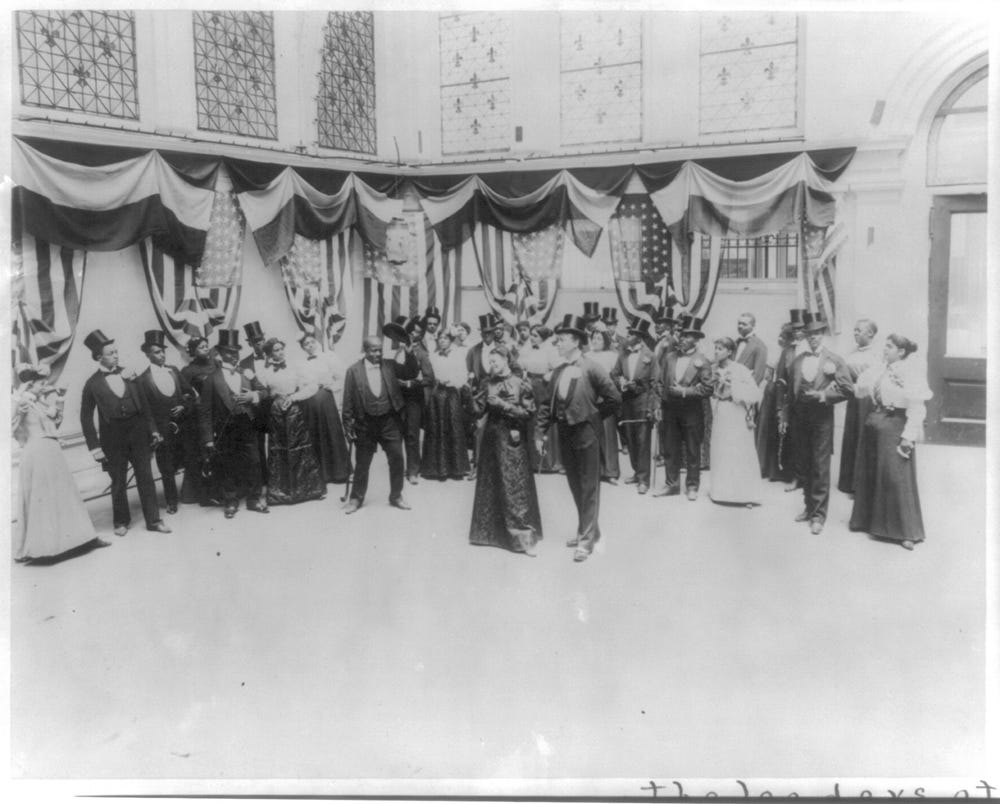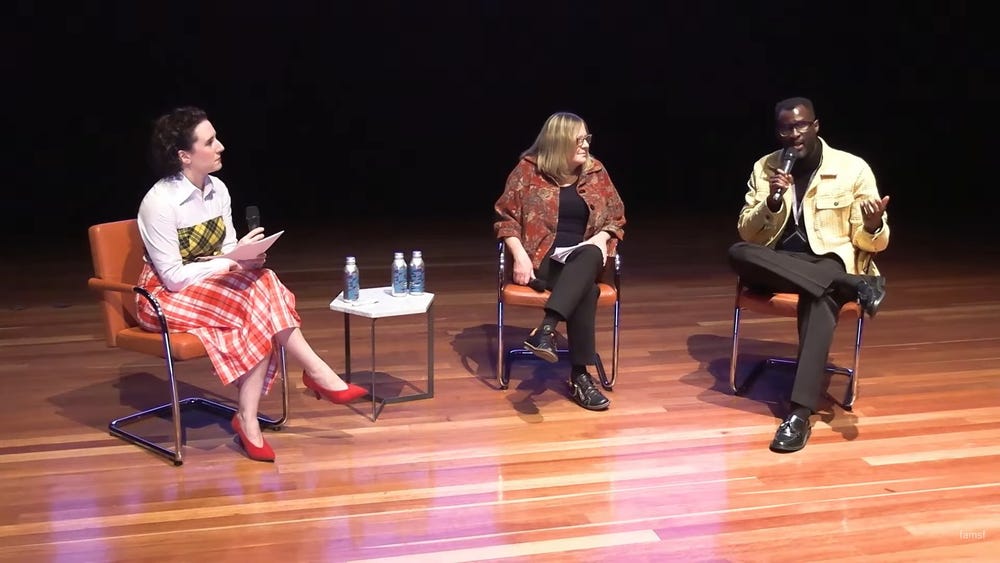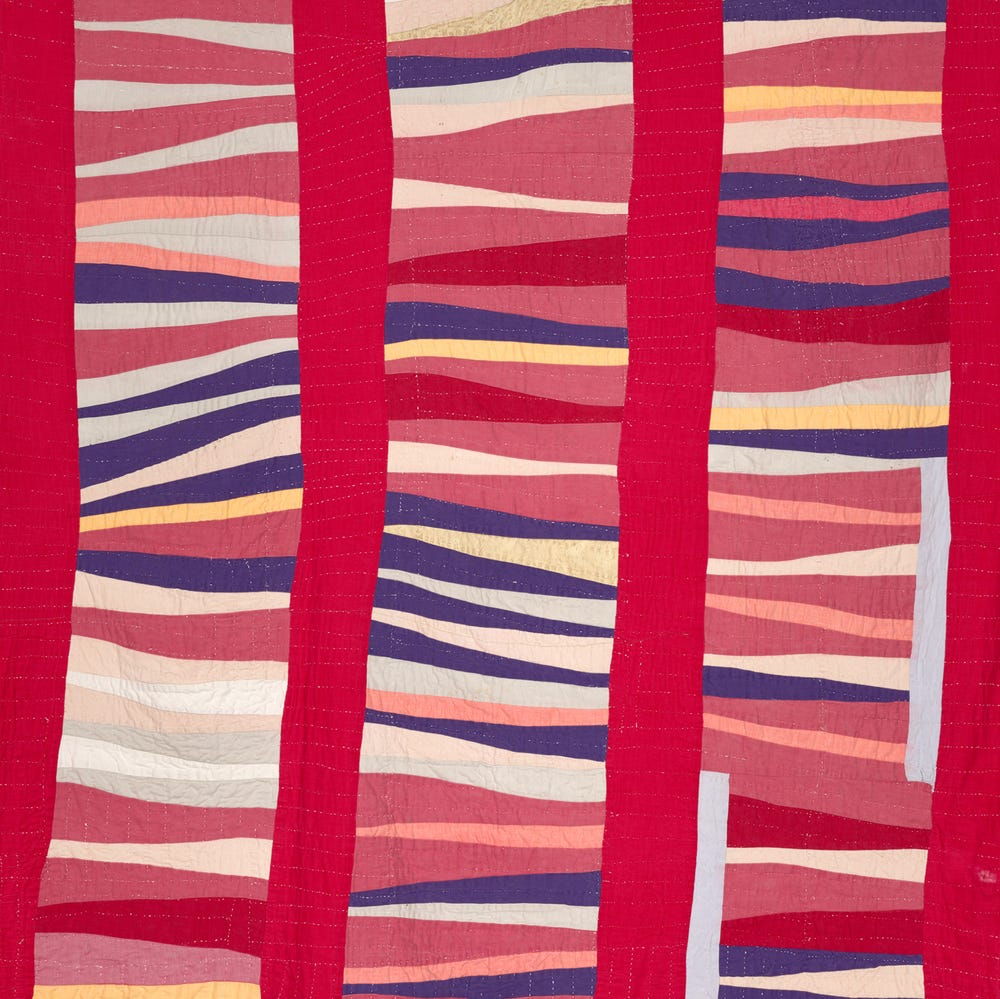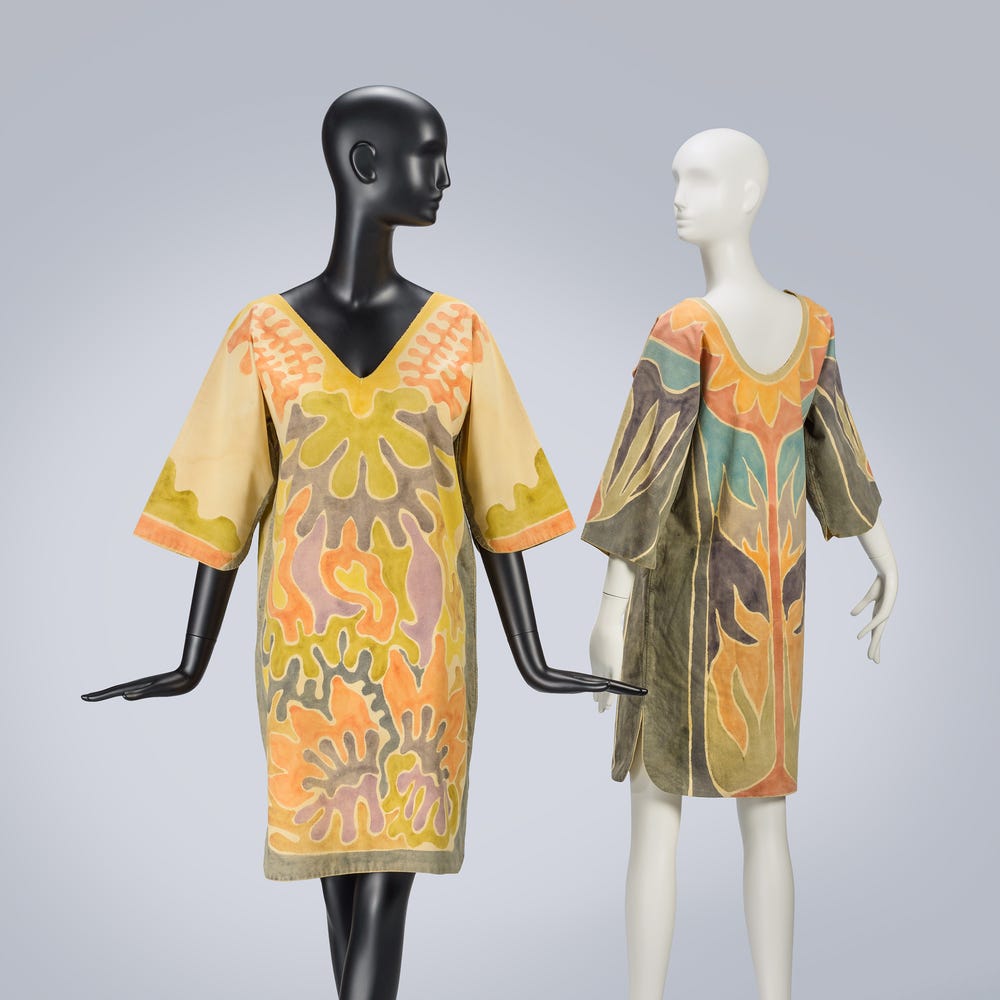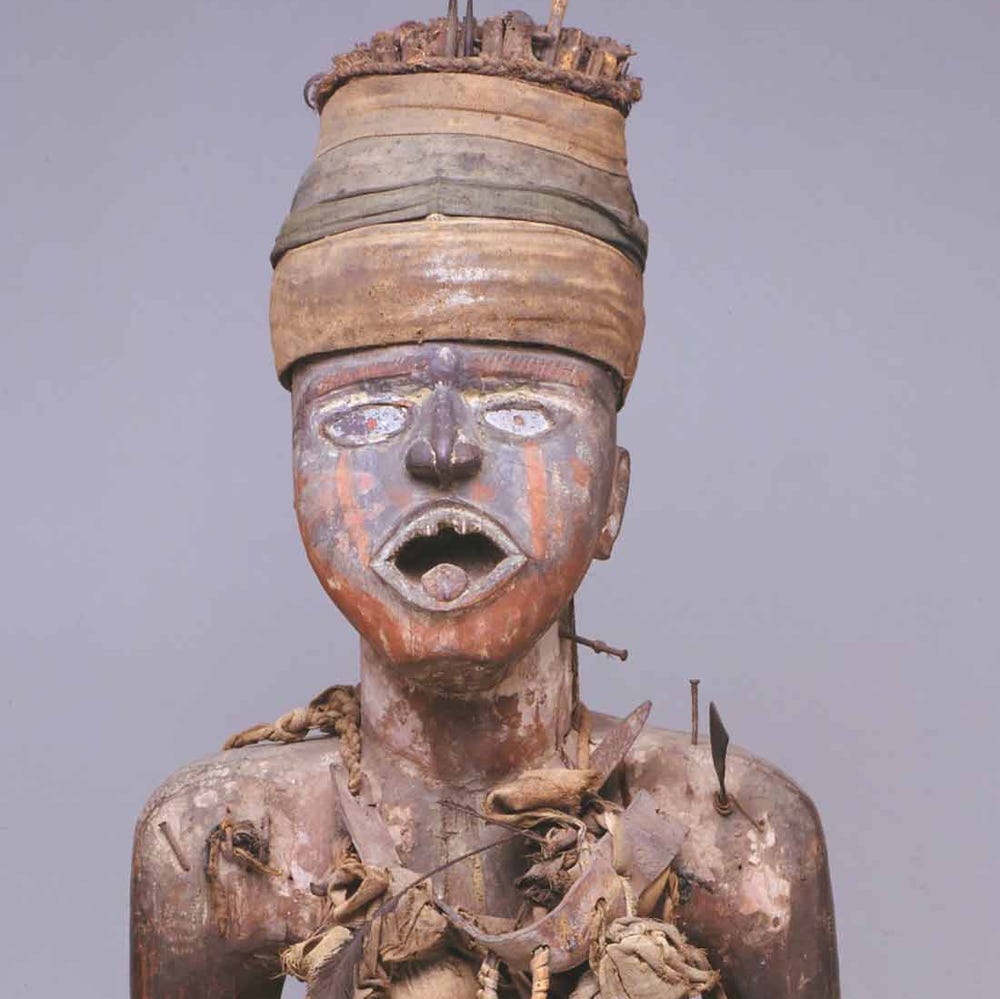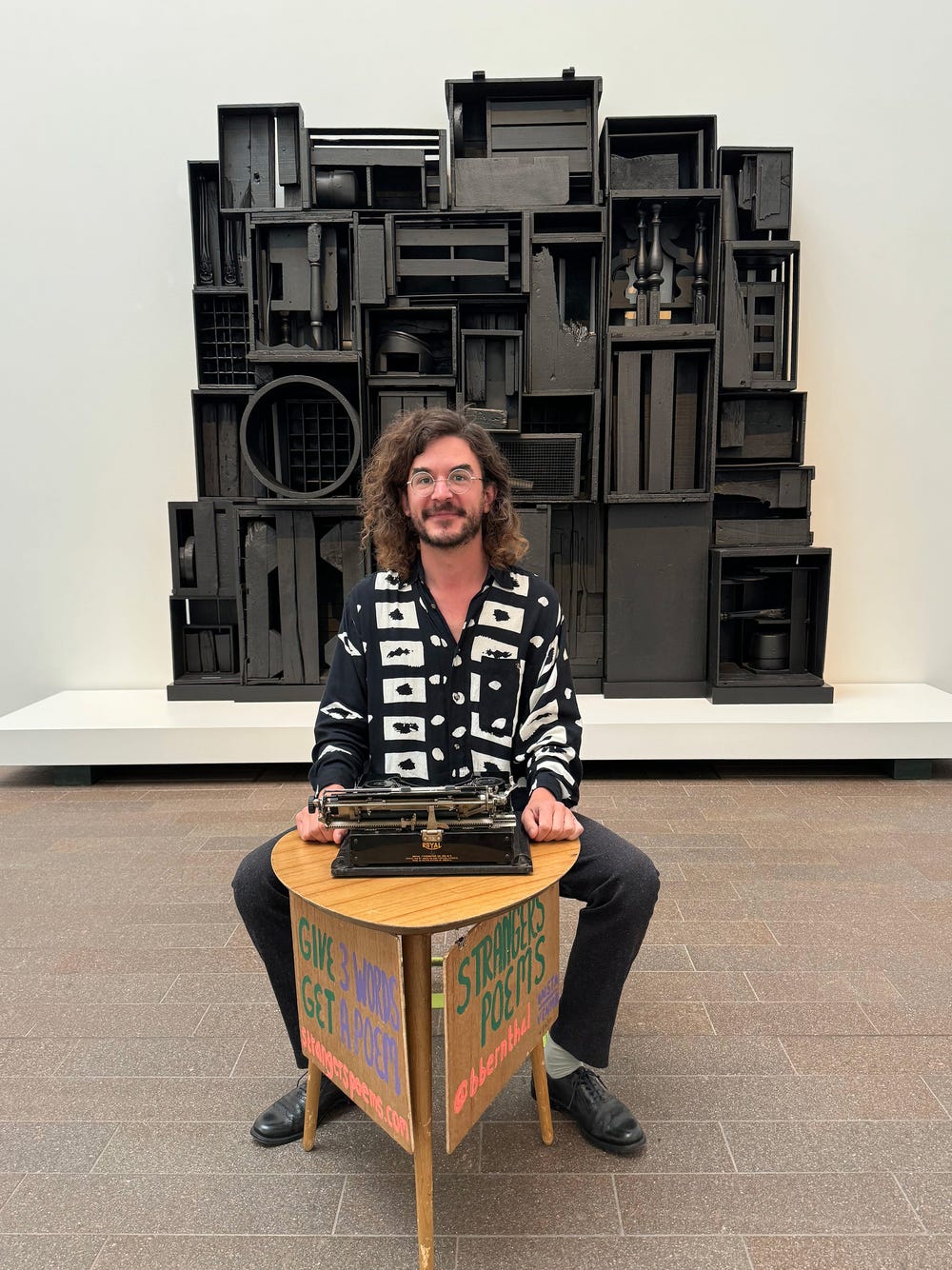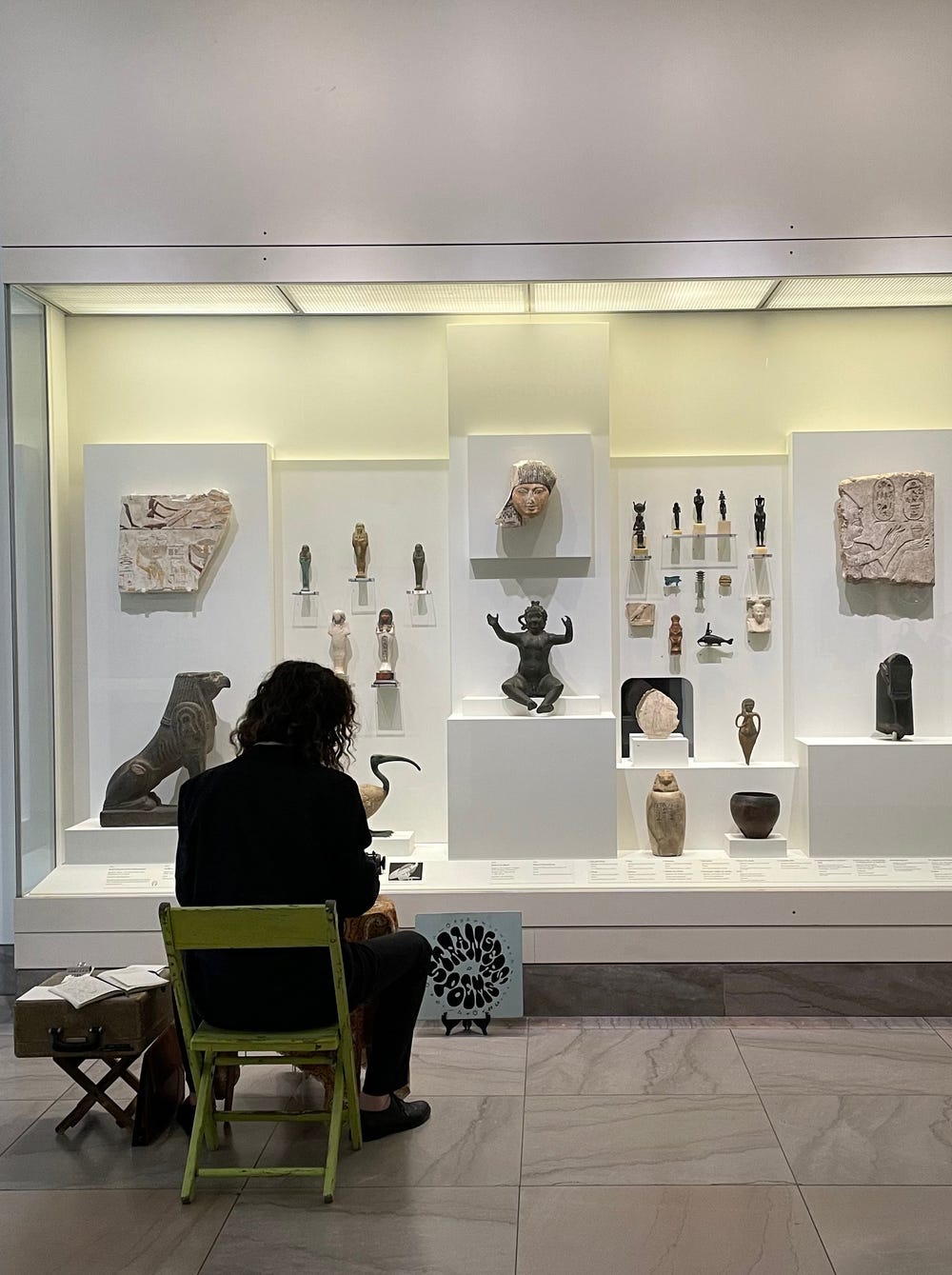Appropriation, Appreciation + Commodification
By Abram Jackson, director of interpretation
February 22, 2024
Installation view of Fashioning San Francisco: A Century of Style, de Young, San Francisco, 2024. Photograph by Gary Sexton
On the opening day of Fashioning San Francisco: A Century of Style, I was on a panel about cultural appropriation and appreciation. I was excited to reunite with Dr. Susan Kaiser, textile and clothing professor emerita from UC Davis, where I attended college. Twenty-three years ago, I interviewed Kaiser in my documentary For Us, By Us, For Them Too for an African American film and TV course. Kaiser spoke to the implications of cultural appropriation for consumers. The chance of coming together all of these years later to discuss the same topic in a new context was fortuitous. What I wanted viewers of my documentary in 1999 and visitors to the de Young in 2024 to consider when thinking about this topic hasn’t changed — it’s still all about power.
Cultural appropriation and commodification
I often link cultural appropriation with commodification, as they tend to work in tandem. The global fashion industry is valued at 1.77 trillion (as of 2022) and thus is part of a capitalist enterprise that is often exploitative. In the exhibition, there are several ensembles that reflect the practice of Western designers utilizing fashion elements from other cultures: Mali, Algeria, and China, to name a few. When thinking about this section of the exhibition, I, along with the 2023 interpretation summer intern Tyah Amoy-Roberts, suggested it be titled “Global Aesthetic Influences” as opposed to “Cross Cultural Influences,” another title being considered. The term “cross cultural” felt even, almost an equal exchange. The change in wording helped ensure power relations would be a part of the story we told in the wall text.
(left) Yves Saint Laurent, est. 1963, evening dress. Spring/Summer 1967 Haute Couture; (right) Yves Saint Laurent, est. 1962, evening dress. Spring/Summer 1967 Haute Couture. Photograph by Randy Dodson
Cultural appropriation has several layers. The first consists of one culture appropriating or taking cultural attributes from another culture as their own. The word “appropriate” is the root word, meaning to make what is appropriate for one culture appropriate for another. The essay “Eating the Other: Desire and Resistance” by bell hooks notes the othering that happens within cultural appropriation, when one group with sociopolitical and economic power consumes cultural attributes without acknowledgment or compensation. During the panel, Kaiser offered a compelling reminder about how this shows up in visual culture: “It’s a tricky thing about fashion design in particular. Because it is so visual . . . When I write an essay, I try to be very, very careful about citations so as to avoid plagiarism. In the case of the visual world . . . It’s not as easy to label and identify items.” There is no work cited or reference page for the clothes we wear and no mechanism to relay an intimate knowledge or experience with the source culture.
Individual vs. institutional appropriation
There is a distinction between interpersonal and institutional appropriation. The interpersonal concerns are many: What about wearing gifts from close friends outside of one’s culture, or items from partners within mixed racial or ethnic romantic relationships? Ultimately, we all appropriate, and there is often an invisible significance of our clothing that quite frankly doesn’t need explanation.
However, it doesn’t hurt to pause and consider the implications of what we wear. I was brought back to my youthful obsession with Buddhist prayer beads, a popular accessory in the United States in the late 1990s. Back then, a Buddhist friend of mine inquired if I knew anything about the purpose or context, and I embarrassingly admitted I didn’t. When she shared more with me, it caused me to pause and reconsider; I chose to stop wearing them.
Antoine Taveneaux, A Buddhist monk at Sera Monastery with prayer beads, CC BY-SA 3.0, via Wikimedia Commons
On the other hand, I’ve always hoped to be invited to an Indian wedding. My understanding is that often when people outside of the culture are invited, they are expected to wear sarees or kurtas, and to do otherwise would be disrespectful. This is an example of cultural appreciation. It speaks to a close cultural proximity, where one might proudly wear fashion outside of their culture because of the connections and the invitation to do so. However, an Indian-themed party by folks outside the culture would miss all of the richness of the cultural context. It could be problematic because the fashion would be worn without the spirit and humanity of the people who created it. This is an example of appropriation where a culture becomes a costume.
So what can we do?
One thing we can do is research, with the goal of buying and wearing clothing that is ethically and sustainably sourced, even if we don’t get it right 100% of the time. More importantly, at an institutional level, designers should do research when appropriating cultures outside their own. What is the context of what is worn? What is the purpose of the fashion? Who typically wears it? Given the power relations, is there an opportunity to acknowledge or compensate the group a fashion comes from, through an organization or directly to the artisans who are the original creators? Edward Said’s Orientalism (1978) connects appropriation with imperialism and the inherent othering therein. In many ways, the fashions of cultures colonized by the West become an extension of the human and natural resources brought back and/or used for Western consumption. Calling that out is important.
What about appropriation from the bottom up?
Examples of bottom-up appropriation include the Cakewalk and Ballroom culture of the mid-19th century, where queer Black and Brown people replicated the fashions of wealthy white people. In these cases, the idea of uneven power is still key. Enslaved and formerly enslaved Black people mocking the white ruling class is an act of resistance. Queer Black and Brown people — many living at or below the poverty line — replicating the social performances of wealthy white people points out the power imbalance. They are affirming that they deserve just as much respect and humanity.
The Leaders at the cake walk, 1897. PPOC, Library of Congress
We can’t ignore the violence at the core of appropriation. Social power allows for some to wear clothing that others might be harmed for wearing, as is the case of bindis, cornrows, turbans, sagging pants, and qipao. But considerations about wearing attributes from another culture should be a self-reflexive exercise. This isn’t a call for spring cleaning. Rather, it’s an opportunity to consider the impact of our consumer choices and the companies that feed our love for fashion. As simple as we might hope our fashion choices might be, they are, like so many other things, more complicated than meets the eye.
Watch the full Fashioning San Francisco opening day panel for more about cultural appropriation and appreciation.
A conversation on appropriation and appreciation in fashion
